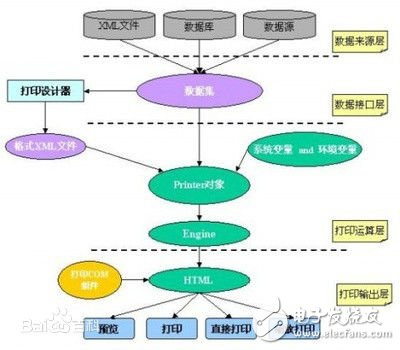What is the application interface _ What is the role of the application interface?
Referred to as API (ApplicaTIon Programming Interface), it is the agreement of the different components of the software system.
In data encapsulation, each layer in the network layer interacts with each other and provides services. The interface between the application layer and the user is called an application program interface. The API is actually a collection of functions, or a collection of definitions and protocols. Regardless of the kind of collection, its essence is to abstract the details and complexity of the implementation by the user.
From the user's point of view, the application interface is represented by a series of API functions that users can use to develop web applications. From a network perspective, the application program interface provides a set of methods for users to use to send service requests, information, and data to the application layer. The layers in the network respond in turn, and finally complete network data transmission.

1. Remote Procedure Call (RPC): Communication between programs is achieved through processes (or tasks) that act on the shared data buffer.
2. Standard Query Language (SQL): It is a standard query language for accessing data, and data sharing between applications is realized through a general-purpose database.
3. File Transfer: File Transfer enables data sharing between applications by sending formatted files.
4. Information Delivery: Refers to small formatted information between loosely coupled or tightly coupled applications, enabling data sharing through direct communication between programs.
principle:APIs are pre-defined functions that provide the ability for applications and developers to access a set of routines based on a piece of software or hardware without having to access source code or understand the details of internal workings.
Common application interfaceThere are many application interface interfaces in the application layer, and they are developing very fast, such as socket, FTP, HTTP, and telnet. These interfaces can be divided into four categories from a large class:
Remote Procedure Call Protocol (RPC)
Data query interface
File class interface
Data communication interface
For example, the FTP protocol is a file-like interface. Based on FTP, users can share and transfer files between networks. Sockets and HTTP can be reduced to data communication interfaces. Based on these two interfaces, users can develop network communication applications and web page interaction programs. Of course, from the perspective of programming development, whether it is FTP, HTTP or telnet, the application layer protocol developed based on the socket interface is a further encapsulation and abstraction of the socket interface, thereby providing users with a higher level of services and interfaces. .
Socket is sometimes called "Berkeley Socket", which was the first application interface developed by Berkeley. There are two types of commonly used sockets: streaming socket (SOCK_STREAM) and datagram socket (SOCK_DGRAM).
A streaming socket is a connection-oriented socket for connection-oriented TCP service applications.
A datagram socket is a connectionless socket that corresponds to a connectionless UDP service application.
In terms of the user interface, there is also a transport layer TLI interface, developed by AT&T, sometimes called XTI. It is the application interface provided by the transport layer for users and can be used for application development at the transport layer.
The main purpose of the API is to provide the ability for applications and developers to access a set of routines without having to access the source code or understand the details of the internal workings. Software that provides the functionality defined by the API is called an implementation of this API. The API is an interface, so it is an abstraction.
Shenzhen Kaixuanye Technology Co., Ltd. , https://www.iconline-kxy.com